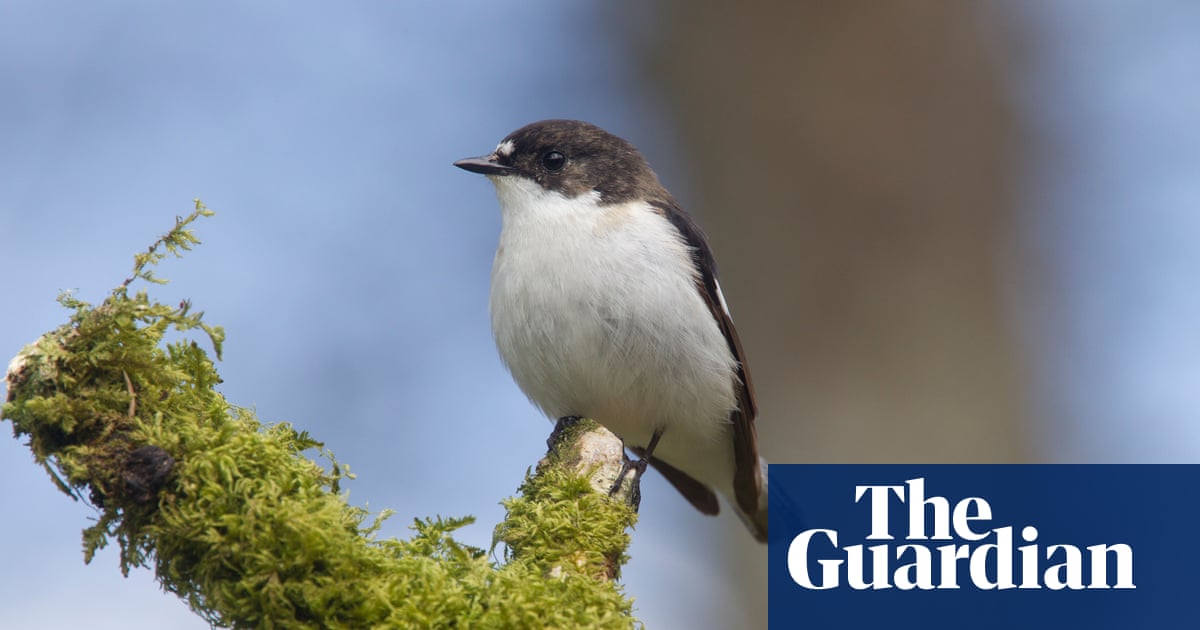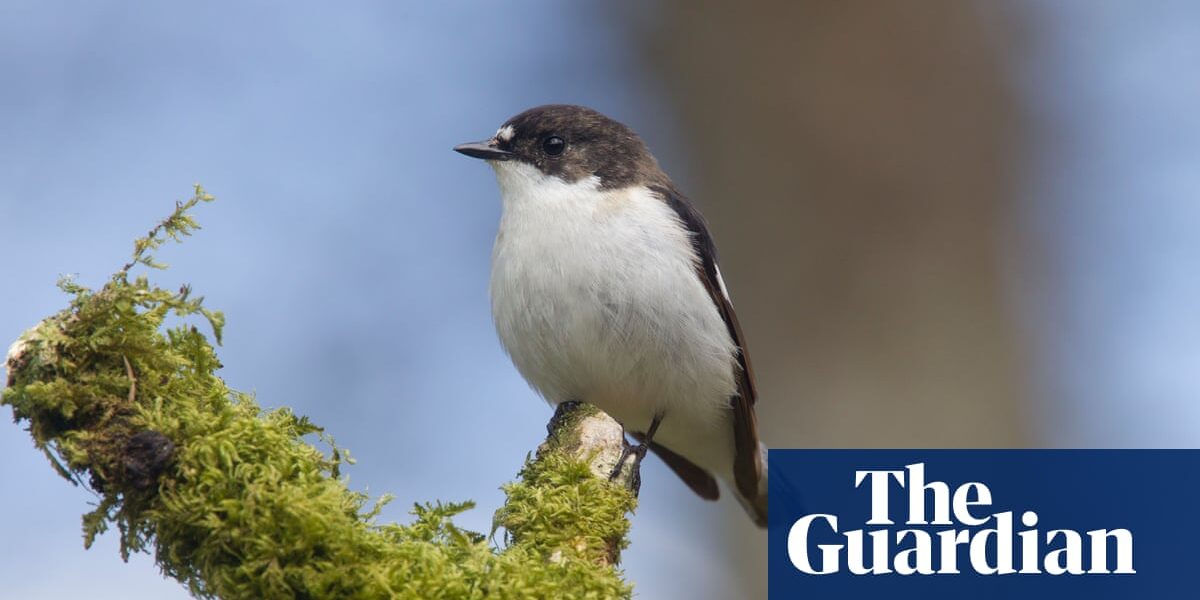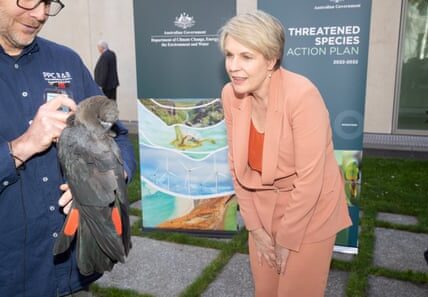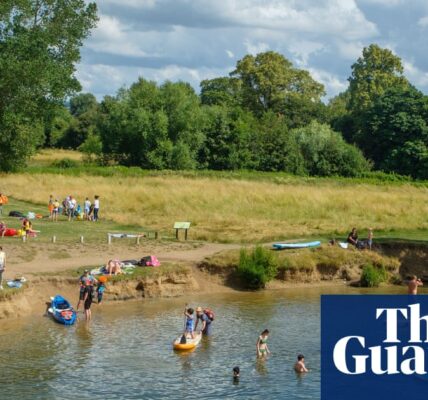Some of the top wildlife events in the UK in 2023 include feeding frenzies and the return of glowworms.

Some of the notable highlights of British wildlife in 2023 include impressive feeding frenzies of Atlantic bluefin tuna, a rise in the population of glowworms, and a successful breeding season for pied flycatchers.
However, environmentalists cautioned that there is still an overall decrease in wildlife, with 1 in 6 species facing the threat of extinction. They also noted that wildlife is facing new challenges due to factors such as climate change, disease, and human activities that cause harm.
Numerous sightings of “bait ball” feeding frenzies were reported from Scotland to the Isles of Scilly, with whales, dolphins, and bluefin tuna all participating. This phenomenon happens when predators corral smaller fish, like mackerel, into a concentrated mass, which is then attacked by cetaceans, tuna, and opportunistic seabirds.
The increase in bluefin tuna sightings, which used to be prevalent in British waters, is attributed to fishing limitations in the last 15 years and rising ocean temperatures. As a result, the International Union for Conservation of Nature (IUCN) has removed bluefin tuna from its endangered species list and the UK has resumed limited fishing in its waters.
According to Dr Lissa Batey, who leads marine conservation efforts at the Wildlife Trusts, this remarkable fish has made a comeback from the brink of extinction. However, there is still a high risk of overfishing and causing another decline in the population. Therefore, it is crucial that fishing quotas are set realistically and strictly enforced. By allowing nature to have adequate space, we can witness the recovery of wildlife – it’s that straightforward. Taking action sooner rather than later is necessary to meet the UK’s goal of protecting 30% of its seas by 2030.
Some notable accomplishments on land were seen, such as the sighting of 303 female glowworms at Whitecross Green Wood nature reserve in Oxfordshire, which is the highest number recorded since 1999. Additionally, there were record numbers of natterjack toadlets in Cheshire, which are a rare and dwindling species. These successes were attributed to specific conservation efforts.
In 1975, there were no military orchids observed at the Homefield Wood reserve in Marlow, managed by Berkshire, Buckinghamshire & Oxfordshire Wildlife Trust (BBOWT). However, this year, a new record was set with 1,111 orchids counted. Dedicated volunteers played a crucial role by carefully placing protective shields around each plant to prevent deer and rabbits from eating the scarce flowers.
The emergence of a southern migrant hawker dragonfly breeding in Oxfordshire for the first time is further evidence of the shifting climate. This is due to many species of dragonfly extending their territory in Britain as a result of rising global temperatures.
Colin Williams, the senior officer for ecology at BBOWT, expressed that witnessing a surge in glowworms or spotting unfamiliar dragonflies is a wonderful experience. However, he credits this success to the hard work of their staff and countless dedicated volunteers who have spent years creating strong and varied habitats.
“The overall situation for wildlife in our three counties is extremely concerning, with nature facing a crisis throughout our region. We are striving to preserve what little we have left until we can turn things around.”
During the winter season, bird enthusiasts were delighted to observe a significant influx of migratory waxwings. However, during the summer, an unprecedented number of migratory pied flycatchers were documented nesting in several RSPB woodlands.
Volunteers have played a crucial role in aiding the flycatcher population by installing specialized nest boxes and removing the thick holly undergrowth. Additionally, proper management of the woodland has allowed for the growth of flowers like wood anemone and wood sorrel, which in turn attracts a greater number of insects that serve as food for the agile flycatchers.
At RSPB Haweswater, located in the Lake District, 29 male birds were observed singing. This indicates a potential population of 50 to 60 breeding pairs throughout the reserve, marking the highest count in 10 years. In addition, an impressive 66 birds were documented at RSPB Coombes Valley and Consall Woods in Staffordshire.
According to Spike Webb, the RSPB warden at Haweswater, this year has seen the highest number of birds in 10 years. It is a delight to see them return to the forests of Haweswater in the Lake District to breed after making the journey all the way from west Africa in the spring.
Bypass the advertisement for the newsletter.
after newsletter promotion
However, there is still a concerning decrease in the population of British seabirds. According to a joint study conducted by the RSPB and the Isles of Scilly Wildlife Trust, there has been a 20% decrease in seabirds on the Isles of Scilly since 2015. This area is considered to be one of the most significant breeding colonies in England. The survey also revealed that common terns are no longer seen as annual breeders, while kittiwakes are expected to follow the same pattern. Lesser black-backed gulls have experienced a significant decline of 58%, and the red-listed herring gull has also seen a decrease of 40%.
Despite some birds displaying resistance to avian flu, such as the gannets on Bass Rock, Scotland with black irises instead of pale blue, a significant number of seabirds still succumbed to the illness.
The number of terns living at Cemlyn Nature Reserve in north Wales has decreased by 50% since 2022 due to the spread of avian flu. In 2023, 1,200 dead terns were found on the reserve. During the breeding season, Dorset Wildlife Trust observed 600 deceased birds on Brownsea Island, mostly consisting of sandwich and common terns, as well as black-headed gulls.
There were many thrilling observations of marine animals, including 156 sightings of Risso’s dolphins in Cornwall, which is a significant increase from last year’s 45 sightings. Additionally, there were over 20 sightings of fin whales off the coast of Cornwall, a notable difference from only five sightings in 2022. A male orca was also seen three miles from Bempton Cliffs, marking the first sighting off the coast of Yorkshire since 2007.
Many of the marine conservation zones in Britain are referred to as “paper parks” by conservationists because they fail to effectively restrict harmful fishing practices, such as trawling, within their boundaries.
However, this year the government established a reduced catalog of the initial highly protected marine areas (HPMAs) in English waters. These include protected areas in Allonby Bay, Cumbria; Dolphin Head, Sussex; and the north-east portion of Farnes Deep in the North Sea.
Battery stated that this improved level of protection will effectively prevent harmful activities like trawling and allow for the restoration of marine wildlife, ultimately benefiting both fishermen and habitats that store carbon. These designated areas make up less than one percent of English seas, making it a small initial step towards future designations.
Source: theguardian.com



